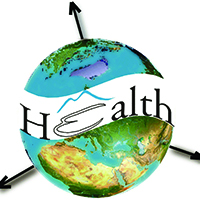Role of geography in the reorganization of the Italian National Health Service: Implementation of geographic information in the logistics and resilience of organizational structures

Submitted: 23 July 2021
Accepted: 29 November 2021
Published: 17 May 2022
Accepted: 29 November 2021
Abstract Views: 876
PDF: 343
HTML: 13
HTML: 13
Publisher's note
All claims expressed in this article are solely those of the authors and do not necessarily represent those of their affiliated organizations, or those of the publisher, the editors and the reviewers. Any product that may be evaluated in this article or claim that may be made by its manufacturer is not guaranteed or endorsed by the publisher.
All claims expressed in this article are solely those of the authors and do not necessarily represent those of their affiliated organizations, or those of the publisher, the editors and the reviewers. Any product that may be evaluated in this article or claim that may be made by its manufacturer is not guaranteed or endorsed by the publisher.

 https://doi.org/10.4081/gh.2022.1041
https://doi.org/10.4081/gh.2022.1041





